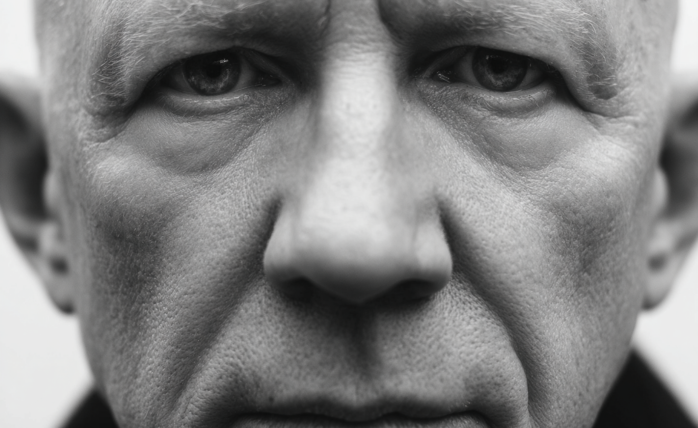Change Your Mindset
The Four Types of Happiness: Which One Are You Living In?
Most people chase success only to find emptiness, this model reveals why true happiness lies somewhere else.

In a world driven by rapid technological growth and constant competition, many people unknowingly trade joy for achievement.
We rush to “get ahead,” often chasing stones while leaving gems behind. We believe that if we work hard today, happiness will arrive tomorrow, yet that promise rarely comes true.
Dr. Tal Ben-Shahar, a leading expert in Positive Psychology and author of bestsellers such as Happier: Learn the Secrets to Daily Joy and Lasting Fulfillment and The Pursuit of Perfect, offers a model that challenges this mindset.
Known as “The Hamburger Model”, his framework breaks down the pursuit of happiness into four archetypes: Nihilism, Hedonism, the Rat Race, and True Happiness, revealing how our daily choices shape our emotional wellbeing.
Ben-Shahar’s Four Happiness Archetypes
1. Nihilism: The Absence of Hope
Nihilism sits in the bottom-left quadrant of Ben-Shahar’s model. Nihilists have lost faith in both the present and the future. They experience neither joy nor purpose, feeling trapped in resignation. Life feels like a series of meaningless motions rather than moments of fulfillment.
In short: Nihilists have stopped believing happiness is possible and as a result, they stop seeking it.
2. Hedonism: Pleasure Without Purpose
The lower-right quadrant represents Hedonism, where the focus is entirely on present pleasure.
Hedonists live for the moment, seeking comfort and excitement without thinking about long-term consequences. While their lives may look carefree, they often lack challenge, direction, and deeper satisfaction.
In short: Pleasure alone, without purpose, quickly loses its flavor.
3. The Rat Race: Delayed Happiness
In the upper-left quadrant lies the Rat Race, perhaps the most relatable archetype today.
Here, happiness is postponed for the future. People sacrifice joy in the present, believing it will all pay off “someday.” But once a goal is achieved, a new one immediately takes its place, leaving no room for genuine contentment.
In short: The Rat Racer chases happiness endlessly but never catches it.
4. True Happiness: Balance Between Present and Future
The upper-right quadrant represents True Happiness, the ideal balance between enjoying today and planning for tomorrow. This archetype reflects mindfulness, gratitude, and purpose living in the moment without losing sight of meaningful goals.
In short: Real happiness is both a journey and a destination, enjoying the process while moving toward growth.
What This Means in Today’s World
Today’s world moves faster than ever. The lines between work, ambition, and personal life blur.
Parents have little time for children, leaving emotional gaps that often lead to confusion, loneliness, or even rebellion. Elderly parents feel neglected as younger generations chase success.
In this relentless pursuit, we risk forgetting why we’re running at all. True success isn’t about outsmarting others. It’s about finding meaning. Life is a gift, and we must learn to balance pressure with pleasure and speed with stillness to make it worthwhile.
The Bottom Line: Happiness Is a Journey, Not a Destination
Happiness isn’t found in wealth, fame, or status; it’s found in balance. Many people treat happiness as an end goal, but in truth, it’s a means to living a fulfilled life.
Every moment spent waiting for joy is a moment of joy lost. As countless thinkers and psychologists remind us, true happiness lies in the journey, in being fully present today while nurturing hope for tomorrow.
So, live consciously. Let go of the past you cannot change and the future you cannot predict. Find that sweet spot between ambition and contentment, pressure and pleasure, today and tomorrow.
Because happiness isn’t something you chase, it’s something you choose.
Change Your Mindset
The Silent Skill That Makes People Respect You Instantly
What truly earns respect and why most people go about it the wrong way

Everybody craves respect but not everyone earns it. Some people believe that a title, years of experience, or a position of authority automatically entitles them to respect. (more…)
Change Your Mindset
How to Turn Your Mind Into Your Greatest Asset (Instead of Your Enemy)
The thoughts you feed your mind today quietly become the life you live tomorrow.

The human mind has two parts: the conscious mind and the subconscious mind. Both work together, but each has a very distinct role in shaping your life, decisions, habits, and results. (more…)
Did You Know
The Success Patterns You Inherited (And Didn’t Notice)
Your family history may hold the key to why you think, act, and feel the way you do today.

Who are you? Your experiences and your family’s narratives and legacies contribute to your identity. Your ancestry contains individual traits and forces that have been inherited over the years. It also carries the fights and victories of your forebears and older family members. (more…)
Shift Your Mindset
11 E’s That Define Every Great Leader And Why Most People Miss Them
If you’ve ever felt the pull to lead, this is your roadmap to turning inner potential into lasting influence.

What Is Leadership, Really?
Leadership is far more than a title or position. It’s the ability to envision a future, inspire others, and align people toward a shared goal. (more…)
-

 Success Advice4 weeks ago
Success Advice4 weeks agoInside the TikTok Resume Hack That’s Fooling Recruiters (For Now)
-

 Change Your Mindset4 weeks ago
Change Your Mindset4 weeks agoThe One Leadership Habit That Separates the Great From the Forgettable
-

 Personal Development3 weeks ago
Personal Development3 weeks agoThis Silent Habit Might Be Sabotaging Your Career
-

 Business3 weeks ago
Business3 weeks agoWhy Your E-Commerce Fulfilment Is Probably Broken (And How to Fix It)
-

 Shift Your Mindset2 weeks ago
Shift Your Mindset2 weeks ago11 E’s That Define Every Great Leader And Why Most People Miss Them
-

 Did You Know2 weeks ago
Did You Know2 weeks agoThe Success Patterns You Inherited (And Didn’t Notice)
-

 Business2 weeks ago
Business2 weeks agoThe Hidden Money Pit in Your Operations (and How to Use It)
-

 Entrepreneurs7 days ago
Entrepreneurs7 days agoThe Essential Skills Every Entrepreneur Needs In 2026














